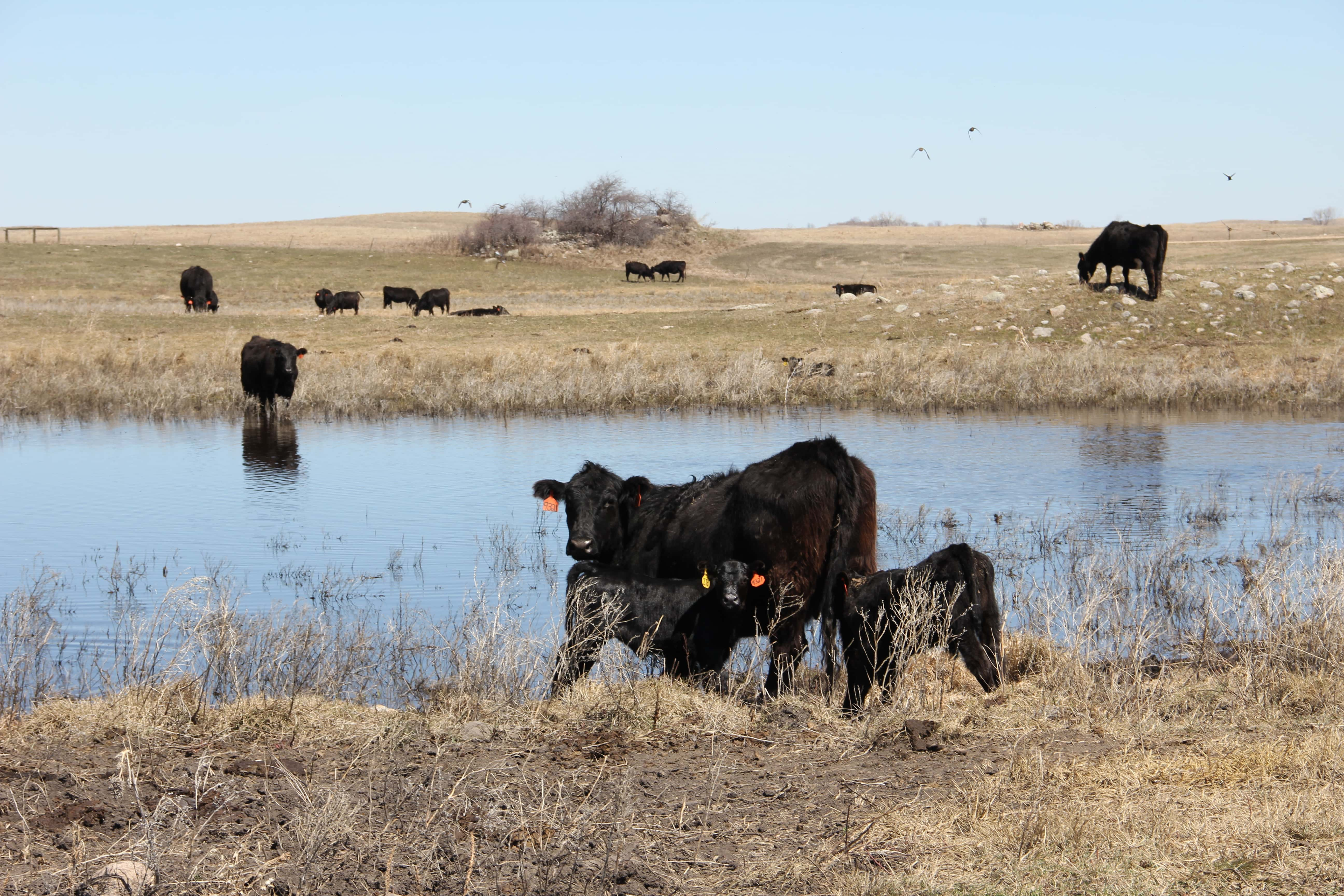
Image and content provided by NDSU Extension
Providing adequate water to livestock is critical for animal health and production.
“Good-quality water can have a major impact on your cattle’s intake and weight gain,” says Miranda Meehan, North Dakota State University Extension livestock environmental stewardship specialist.
Canadian studies have shown the quality of water accessible to livestock is directly tied to the amount of forage they consume. Studies report improved gains by as much as 0.24 pound per day in yearlings and 0.33 pound per day in calves receiving good-quality water.
Providing good-quality water also can improve herd health. Livestock whose primary water sources are ponds and dugouts have a greater risk of contracting illnesses such as giardia, leptospirosis and cyanobacterial poisoning, compared with livestock drinking from a trough.
“Water quality can vary depending on the source,” says Tom Scherer, NDSU Extension agricultural engineer. “Groundwater tends to be of higher quality than surface water; however, some aquifers in North Dakota have naturally high levels of potentially toxic salts such as sulfate due to geology.
“Weather also can influence water quality,” he adds. “When runoff is low in the spring or during a drought, the salts in surface water become more concentrated as water levels decline and can reach levels that can be toxic.”
All natural water contains dissolved minerals (often called salts). The concentration of the total dissolved solids (TDS) is measured in parts per million (ppm). For most classes of grazing livestock, the TDS in the water should be less than 5,000 ppm.
Sulfate is part of the TDS. The recommended concentration should be less than 500 ppm for calves and less than 1,000 ppm for adult cattle. High levels of sulfate can reduce copper availability in the diet. Elevated levels of sulfates may cause loose stool, whereas very high levels of sulfate can induce central nervous system problems.
If a water test indicates that the TDS are greater than 5,000 ppm or the sulfate concentration is greater than 1,000 ppm, producers may have to find an alternative water source or find some way to blend a better-quality water with the poorer-quality water to reduce the concentration of TDS or sulfate.
Water with elevated nutrient levels also are at a higher risk for blue-green algae blooms in periods of hot, dry weather. Some species of blue-green algae (cyanobacteria) contain toxins that can be deadly when livestock and wildlife consume them.
“Monitoring water quality throughout the grazing season is important because it changes in response to climate and environmental conditions,” Meehan says.
To document this variability and help livestock producers identify potential water quality concerns, Meehan and Scherer are working with 23 Extension agents across North Dakota to monitor livestock water quality.
Installing a water development project can help ensure that livestock have access to good-quality water throughout the grazing season, the specialists say.
In addition to benefiting animal health and performance, installing water development projects can:
- Increase flexibility in producers’ management systems
- Increase grazeable acreage and extend the grazing season
- Allow producers to utilize crop residues and cover crops for forage
- Improve grazing distribution
Common water development projects include troughs, pumps, wells and pipelines. Through time, these improvements, combined with appropriate management, have the potential to increase the carrying capacity of a producer’s operation, allowing for an increase in herd size and/or increased drought resistance with stockpiled forages, the specialists say.
For more information on livestock water quality issues or guidance on monitoring livestock water quality, visit https://www.ag.ndsu.edu/livestockextension/water and/or contact your local Extension agent.
